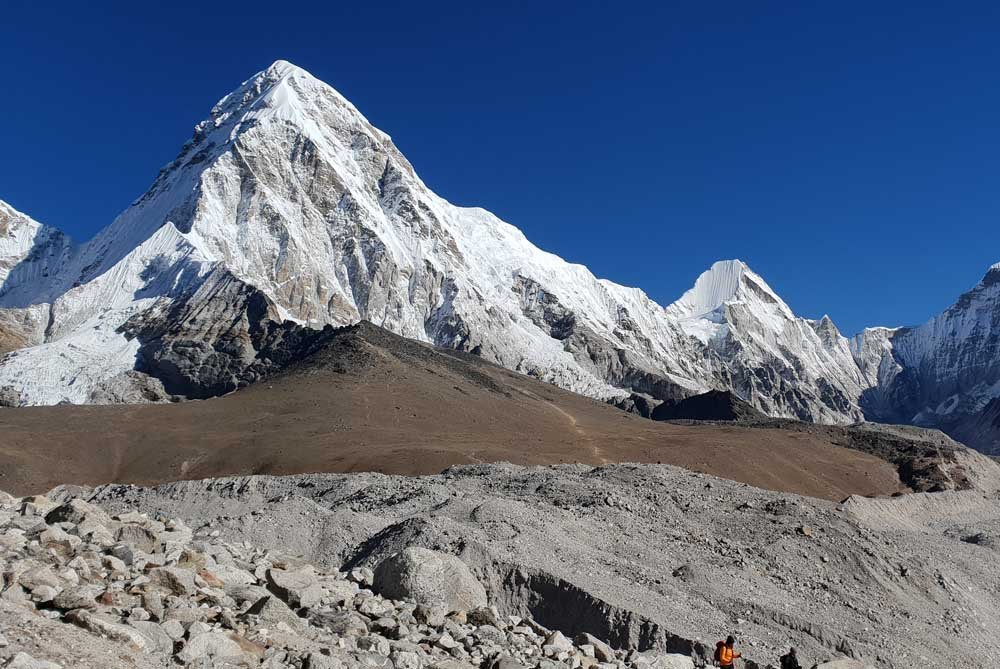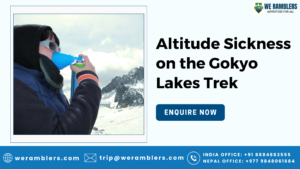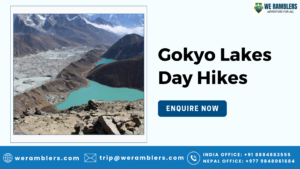Insurance for Everest Base Camp Trek: Why It’s Non-Negotiable for Every Trekker
The Everest Base Camp Trek is one of the most iconic high-altitude treks in the world, drawing thousands of adventure-seekers each year to the heart of Nepal’s Khumbu region. Situated at an elevation of 5,364 meters (17,598 ft), the journey takes trekkers through remote mountain villages, across suspension bridges, and beneath towering Himalayan peaks including Mount Everest (8,848.86m) itself. Spanning 12–14 days, this trek is moderately to highly difficult and demands a good level of physical fitness, altitude adaptation, and mental resilience.
With highlights like the panoramic views from Kala Patthar, the spiritual ambiance of Tengboche Monastery, and the adrenaline-pumping landing at Lukla Airport, the Everest Base Camp experience is both thrilling and demanding. Given its elevation and remoteness, securing insurance for Everest Base Camp Trek isn’t just a suggestion; it’s a crucial part of your preparation. This trek isn’t just another backpacking trip; it’s a serious high-altitude adventure, where the right insurance could literally be a lifesaver.
Why Do You Need Insurance for Everest Base Camp Trek?
Unlike regular vacations, the Everest Base Camp Trek takes you into isolated, high-risk terrain where modern infrastructure is limited. Standard travel insurance policies typically don’t include high-altitude trekking or adventure activities, and relying on such coverage could leave you vulnerable in emergencies.
Specific Everest Base Camp Trek insurance is designed to address the real threats you may face: altitude sickness, sudden weather shifts, difficult evacuations, and unpredictable trail conditions. In the absence of road access, even minor medical issues may require helicopter evacuation, which can cost between $5,000 to $10,000 USD, an expense that the right insurance plan should cover.
High Altitude Risks During EBC Trek: When the Air Gets Thin
The most pressing concern on the Everest Base Camp route is Altitude Sickness, which affects many trekkers at heights above 3,000 meters. Common forms include:
- Acute Mountain Sickness (AMS) – headaches, nausea, and fatigue.
- High Altitude Pulmonary Edema (HAPE) – fluid accumulation in lungs.
- High Altitude Cerebral Edema (HACE) – fluid buildup in the brain.
Severe cases may require immediate descent or helicopter evacuation. Your travel insurance for Everest Base Camp must include coverage up to 6,000 meters, which many standard policies do not.
The best trekking insurance for high altitude trekking explicitly includes coverage for medical evacuation due to AMS, HAPE, or HACE, so make sure to double-check your policy before you fly.
Accidents and Injuries: The Rugged Path Ahead
From icy ascents to rocky descents, the Everest region presents no shortage of physical challenges. Sprains, broken bones, and even minor slips can occur, especially on steep trails and in unpredictable weather conditions.
Standard insurance often excludes adventure sports like high-altitude trekking. So unless you choose a provider that covers trekking above 4,000 or 5,000 meters, you might find yourself uncovered in case of injury. Look for a policy that states explicit coverage for trekking or hiking up to 6,000m, a critical requirement for this route.
Illnesses During the Everest Base Camp Trek: More Common Than You Think
Even without accidents or altitude sickness, trekkers commonly face:
- Respiratory infections
- Gastrointestinal issues (from water or food contamination)
- Fatigue-related complications
Medical clinics in places like Namche Bazaar or Pheriche offer basic aid, but anything serious will need evacuation to Kathmandu. The right Everest Base Camp trek insurance will cover hospitalization, evacuation, and related treatment costs, helping you avoid out-of-pocket expenses in a region where medical care is limited and expensive.

Insurance Coverage for Flight Disruptions and Baggage Loss During EBC Trek
The only way into and out of the Everest region is usually via Lukla Airport, one of the most weather-dependent airports in the world. Delays and cancellations are frequent, and missing a connecting international flight could cost you hundreds, if not thousands, of dollars.
Additionally, trekkers often report lost or delayed baggage, which can severely impact your ability to continue the trek. Replacing cold-weather gear or hiking boots in Nepal isn’t easy or cheap.
Everest Base Camp Trek travel insurance should cover:
- Trip interruption or cancellation
- Missed flight connections
- Baggage loss or delay
- Replacement cost for essential gear
What Your Trekking Insurance for EBC Trek Must Cover
Before selecting your policy, ensure it includes the following:
- Medical evacuation, especially helicopter rescue from remote locations.
- High-altitude coverage—ideally up to 6,000 meters or more.
- Hospitalization and medical expenses in Nepal.
- Trip cancellation or interruption due to emergencies, weather, or illness.
- Baggage loss, delay, or theft.
- Coverage for adventure activities like high-altitude trekking.
- Optional: COVID-19 or infectious disease coverage.
A comprehensive Everest Base Camp Trek insurance plan should be your second most important document, right after your passport.
Recommended Insurance Providers for Everest Base Camp
Here are some highly rated providers trusted by international trekkers for the Everest region:
- World Nomads – Covers trekking up to 6,000m, includes adventure sports, trip delay, and emergency evacuation.
- Global Rescue – Known for excellent evacuation services, including helicopter extraction. Great for climbers and trekkers.
- IMG Global – Offers Patriot International plans with add-ons for high-altitude trekking and evacuation.
- Allianz Travel – Reliable for EU-based trekkers; offers trip interruption, medical, and baggage cover.
- Seven Corners – Adventure sports coverage with up to 6,000m trekking, and flexible emergency response plans.
- Travel Guard by AIG – Offers add-ons for adventure travel, including high-altitude trekking.
- Alpenverein (Austrian Alpine Club) – Excellent for European trekkers; their membership insurance includes rescue and medical assistance.
- Adventure Care – Covers active travel insurance for trekkers, with options for rescue services.
- ASC360 – Specifically built for adventure travelers in Asia and provides custom high-altitude trek insurance.
Always check altitude limitations, exclusions, and whether pre-authorization is required for helicopter rescue.
Typical Insurance Cost for Everest Base Camp Trek
Insurance prices vary by country and policy duration. Policies that include helicopter evacuation and high-altitude trekking will cost more but are non-negotiable for Everest Base Camp. Expect to pay extra fees for adventure coverage or altitudes above 4,000m.
Tips for Choosing the Right Everest Base Camp Trek Insurance
- Altitude Coverage: Ensure it covers up to 6,000 meters minimum.
- Emergency Evacuation: Specifically mention helicopter rescue in the Himalayas.
- Adventure Clause: Read the fine print—“adventure sports” or “mountaineering” exclusions may apply.
- Pre-existing Conditions: Disclose any health issues upfront to avoid claim denial.
- Purchase Early: Buy insurance before your trip begins to activate all features.
- Carry Proof: Keep digital and printed copies of your policy and provider contacts on you at all times.
Why Choose We Ramblers for Your Everest Base Camp Adventure?
At We Ramblers, your safety is our mission. With years of experience guiding treks in the Himalayas, we offer expert-led expeditions backed by certified guides, logistics support, and round-the-clock evacuation coordination. From insurance guidance to permit handling, we make your Everest Base Camp Trek smoother, safer, and unforgettable. Contact us today to get the full itinerary.





